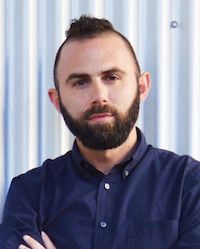Article
Study Finds Positive Views on PrEP, But Usage Remains Low
Author(s):
New research finds two-thirds of gay and bisexual men who know about pre-exposure prophylaxis have a positive view of it. The challenge is that only 4% are using it.

Phillip L. Hammack, PhD
New research into how gay and bisexual men perceive and use HIV-prevention methods shows that while only 4.1% use pre-exposure prophylaxis (PrEP), a majority of those who know about it have a positive view of the prophylactic.
The survey, which broke subjects down into 3 age-based cohorts, also highlights an HIV testing gap among young men—one-quarter (25.2%) of men in the 18-25 age group had never been tested for HIV, the study showed.
Results showing that only 1 in 25 gay and bisexual men use PrEP is consistent with previous research said Phillip L. Hammack, PhD, a professor in the Department of Psychology at the University of California Santa Cruz. However, he said their data showing that 68% of gay and bisexual men who are familiar with PrEP have a positive opinion of it was an encouraging surprise.
“I was thrilled by this finding because it suggested we can really raise that 4% statistic if we can just improve access and reduce whatever barriers may exist for men to get on PrEP,” he said.
Another reason the PrEP opinion numbers were a happy surprise to Hammack is that the daily pill has sometimes been the subject of misinformation and stigma. He said a publicity campaign was launched in the Los Angeles area made misleading and inaccurate claims about PrEP’s efficacy. He said there’s also some negative social pressure within the gay and bisexual communities.
“There is a stigmatizing language in the community about ‘PrEP whores’ in which some suggest that PrEP encourages more risky sex,” he said. “Our study suggests that most men haven’t bought this narrative and instead view PrEP as an important new tool to prevent HIV.”
The data in Hammack’s study are based on a survey of 470 people. It found men in the 34-41 age group were most likely to be familiar with PrEP (79%), whereas 57% of men ages 52 to 59 were aware of PrEP, and 52% of younger men knew about it.
Hammack and colleagues found that men who visited an LGBT clinic or searched for information about LGBT health online were more likely to use PrEP.
Hammack said one insight from the research is the paradox faced by gay and bisexual men in an era where prevention methods are becoming highly effective. He said it’s a positive development that men who have sex with men are now freed from associating sex with fear of death. Yet, it’s also the case that many young men who didn’t live through the AIDS epidemic might not be as vigilant when it comes to important sexual health practices.
“So, on the one hand, I think it’s a very positive development that the sexual culture has changed and that men can be intimate without the level of fear that was common in the AIDS epidemic,” he said. “On the other hand, we need to do a better job educating young men about the importance of HIV testing and prevention.”
Part of the solution, Hammack said, is doing a better job of getting all healthcare providers—not just those who work in LGBT-focused clinics—to educate their young male patients about the best practices for HIV prevention.
“We can’t rely on LGBT health clinics alone, especially since many men do not necessarily have access to such resources,” he said.
The study, “HIV testing and pre-exposure prophylaxis (PrEP) use, familiarity, and attitudes among gay and bisexual men in the United States: A national probability sample of three birth cohorts,” was published in PLoS ONE.





